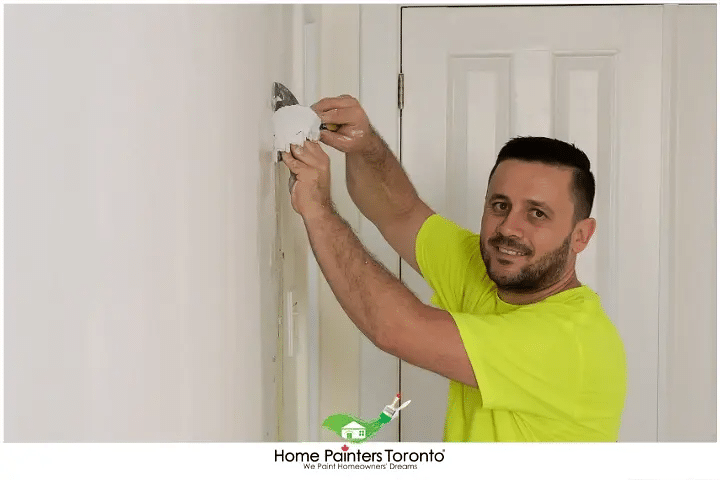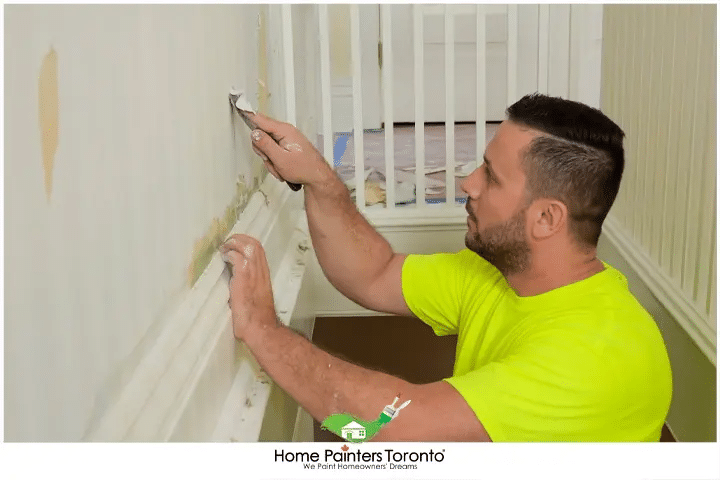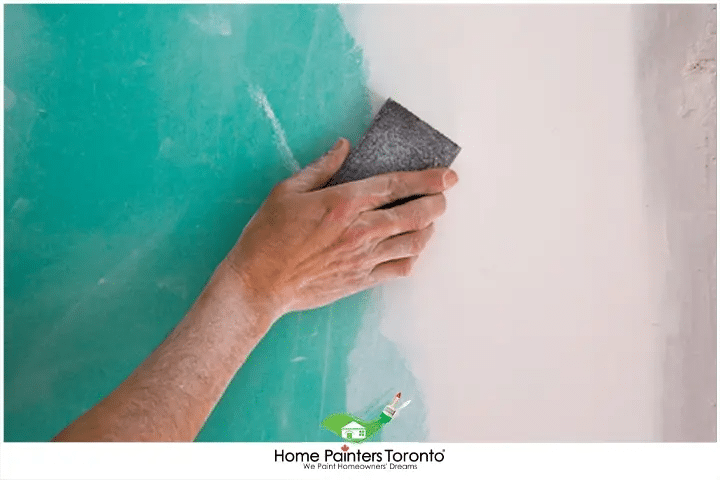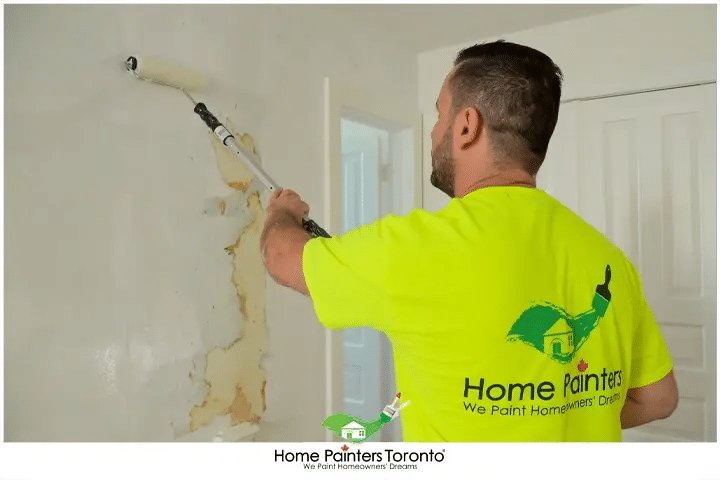
Prevent unsightly peeling paint by correctly managing the surface preparation and paint application.
Pride gives way to chagrin when homeowners who have taken the time to choose paint colours and textures according to their own preferences see that same paint start peeling. Peeling paint is commonplace and very unsightly. The two most common causes are quite simply the ineffective preparation of the surface, and dampness permeating the wall.
Why is the Paint Peeling?
Before we dive into the steps of addressing peeling paint, it’s essential to understand why it happens. And the most effective way to deal with peeling paint is to:
Determine the cause of peeling paint
- Damp: If there is a problem with dampness in your home, nothing you do is going to stop the paint from peeling again until the moisture in the walls or ceilings is addressed.
- Type of Paint: Determine the quality of the paint originally used to paint your house. You do not want to purchase the same product again. Low-grade paint lacks durability and the quality ingredients required to ensure its longevity and ability to bind correctly to the surface for the foreseeable future.
- Inadequate adhesion: This can either be due to the poor substrate quality of paint, bad surface preparation before painting a house, or applying oil paint to a wet surface area.
Who is going to do the repairs?
- Professional: If you’re put off by the labour of even making a cup of tea then you may need to call in the professionals to get the peeling paint sorted. It is hassle-free and they will answer all your questions.
- DIY: Should you decide to DIY (do it yourself), you will need to prepare properly… and ask your spouse to make your tea.
How to Remove Peeling Paint
You will need:
- Paint tray
- Roller brush and a flat paintbrush
- Plastic covering: cover the floor area you’ll be working over in plastic, drop cloths and masking tape. The last thing you want is to be peeling and replacing carpets after peeling and re-painting the walls.
- Paint scraper and a wire brush to feather the edges
- Patching putty
- Sandpaper: Preferably the fine grit for a smoother finish
- Dust cloth
- Latex primer
- Interior/exterior paint

Paint Removal: The Process of Peeling Paint Off the Wall
Choosing the Right Paint Stripper: There are several options available in the form of gel, paste, liquid, and an eco-friendly alternative for the environmentally conscious. First, you need to be certain of the type of paint you will be removing from your wall. Check our other blog “How To Strip Paint or Stain From Wood“.
Handling Lead-based Paint: If your home was constructed before 1978 you need to determine if the peeling paint is lead-based. You cannot simply use a paint stripper on this type of paint, as it is known to cause dangerous levels of lead which can poison both children and adults. Call in the professionals to remove this type of paint.
Handling Regular Paint: This is largely straightforward with the right paint stripper. You could chip the paint blisters off by hand, but keep your phone handy to stay in contact with friends and family because it takes a while. You may also strain a tendon, or five.
If you prefer to DIY then you need to scrape off as much of the peeling paint on the ceiling or wall as possible and use a wire brush to smooth the edges. This is also known as feather-edging and is required if you do not want to see deep paint indentations on your newly painted surface.

Preparing the Wall before Painting It
Repairs: The wall may possibly have holes and cracks in it. Unless you are going for the grunge effect, you will need to fill these with a thin layer of patching putty. Smooth it over so it fills and then coats the cracks and surrounding surface area. Allow the surface to dry completely.
Sanding: Once the putty compound has fully dried, you will need to smooth the surface and edges using sandpaper so it looks even with the wall. You want a flat surface to paint on. You do not want hard splotches of compound on your wall. That will result in some unwanted wall art.
Dusting: You may not immediately notice it, but dust settles all over the surface area and can be an active player in the paint not adhering correctly to the surface. Ensure that you use a dusting cloth to remove all minuscule particles.

Painting the Wall after Removing Peeling Paint
Primer First: Painting primer onto a wall surface is one of the most important steps to ensure paint adhesion as it seals the surface, preventing moisture build-up under the paint. This is also important if you want a professional result. Many homeowners in Toronto skip this step and then do not understand why their paint jobs are not as vibrant as they should be. Primer is highly effective in that it boosts the longevity of your paint, makes it easier to remove stains from walls, and ensures that only one top coat of colour paint is required.
Painting Second: As mentioned before, purchase a quality paint that will not try to move out before you do. You want something that is going to stay on the walls for years to come. High-quality acrylic and latex paints have reduced toxins. When applied correctly, water-based paints are longer-lasting, more durable and maintain their colour. Read this blog to find out which paint fits you better.
Home Painters Toronto and paint consultants at Consummo recommend investing in a wet-film thickness gauge to ensure correct application, this nifty device will definitely help you get the best results from your DIY painting or removing peeling paint job. If applied too thinly, the paint will be a weak barrier; if applied too thickly it will start to crack.

Proactive Measures to Prevent Future Peeling Paint
An old saying goes, “Prevention is better than cure,” and it rings just as true for peeling paint. Having spent time, energy, and money to fix this issue, it’s only natural that we want to prevent the same problem from cropping up again. Let’s talk about a few proactive measures to keep the scourge of peeling paint at bay.
Regular Inspections
The first and foremost step is a regular inspection of your painted areas. By regularly examining your painted surfaces—say, half-yearly or at the start of every season change—you can identify troublesome signs before they escalate. Look out for early indicators of paint peeling, bubbles, or cracks. Remember, the earlier the issue is detected, the easier and often less costly it will be to fix.
Surface Maintenance
The lifespan of your paint job directly relates to the condition of the underlying surface. It’s crucial to tend to any imperfections or damages as they appear. Sealing cracks, filling gaps, and regular cleaning can all substantially prolong the life of your paint. Keeping the surface in good condition aids in the paint’s ability to bond effectively, thereby reducing the chance of peeling.
Moisture Control
As we discussed earlier, moisture is a key culprit in causing paint to peel. Therefore, effective moisture control is a must for preventing this issue in the future. There are a few strategies for this:
- Ventilation: Proper ventilation can significantly reduce indoor humidity. It’s especially crucial in rooms prone to high humidity, such as kitchens, bathrooms, or basements. Using exhaust fans, opening windows when possible, or even using HVAC systems can all help in controlling indoor humidity levels.
- Dehumidifiers: For areas prone to increased humidity, having a dehumidifier can make a world of difference. These devices can maintain an optimal humidity level, ensuring your paint stays unaffected.
- Fix Leaks: Examine your property regularly for any signs of leaks. These could be in the roof, pipes, or even your basement. Prompt repair of these leaks will prevent excess moisture from seeping into your walls and causing your paint to peel.
Quality Materials
Last but not least, always invest in high-quality painting materials. From the primer to the paint and even the painting tools, the quality of materials used can significantly impact the final outcome and durability of the job. It’s a worthwhile investment that will pay dividends in the longevity of your paint job, reducing the likelihood of peeling paint.
Wrapping Up
Peeling paint will drastically reduce the value of your home, whereas a great paint job will remarkably increase the market value of your house. A fresh coat of paint not only pushes your home sale potential up a few notches but removing moisture-related peeling paint can eradicate a health hazard, particularly for people with asthma or weak chests. There are many reasons to repaint the interior of your home, but these two are at the top of the list.
Stop peeling the paint off your wall while reading this blog, and get started already. Call us NOW at 416-494-9095 or email [email protected]! And don’t forget to follow us on all our social channels below!


